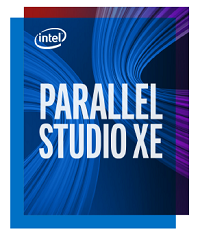In this article we’ll drill down into the capabilities of Intel® Parallel Studio XE 2020, the latest release of a comprehensive, parallel programming tool suite that simplifies the creation and modernization of code. Using this newest release, software developers and architects can speed AI inferencing with support for Intel® Deep Learning Boost and Vector Neural Network Instructions (VNNI), designed to accelerate inner convolutional neural network (CNN) loops.
Intel® Parallel Studio XE 2020: Transform Enterprise, Cloud, HPC & Artificial Intelligence with Faster Parallel Code
Six Platform Investments from Intel to Facilitate Running AI and HPC Workloads Together on Existing Infrastructure
Because HPC technologies today offer substantially more power and speed than their legacy predecessors, enterprises and research institutions benefit from combining AI and HPC workloads on a single system. Six platform investments from Intel will help reduce obstacles and make HPC and AI deployment even more accessible and practical.
DAOS Delivers Exascale Performance Using HPC Storage So Fast It Requires New Units of Measurement
Forget what you previously knew about high-performance storage and file systems. New I/O models for HPC such as Distributed Asynchronous Object Storage (DAOS) have been architected from the ground up to make use of new NVM technologies such as Intel® Optane™ DC Persistent Memory Modules (Intel Optane DCPMMs). With latencies measured in nanoseconds and bandwidth measured in tens of GB/s, new storage devices such as Intel DCPMMs redefine the measures used to describe high-performance nonvolatile storage.
Interview: Terry Deem and David Liu at Intel
I recently caught up with Terry Deem, Product Marketing Manager for Data Science, Machine Learning and Intel® Distribution for Python, and David Liu, Software Technical Consultant Engineer for the Intel® Distribution for Python*, both from Intel, to discuss the Intel® Distribution for Python (IDP): targeted classes of developers, use with commonly used Python packages for data science, benchmark comparisons, the solution’s use in scientific computing, and a look to the future with respect to IPD.
DarwinAI Generative Synthesis Platform and Intel Optimizations for TensorFlow Accelerate Neural Networks
DarwinAI, a Waterloo, Canada startup creating next-generation technologies for Artificial Intelligence development, announced that the company’s Generative Synthesis platform – when used with Intel technology and optimizations – generated neural networks with a 16.3X improvement in image classification inference performance. Intel shared the optimization results in a recently published solution brief.
New Stack Overflow Study of Developer Attitudes, Salaries and Demographics
Stack Overflow, the online community for developers to learn, share their knowledge and build their careers, today released the Stack Overflow Annual Developer Survey results . With more than 100,000 responses from coders in 184 countries and dependent territories, it is the most extensive survey of the programmer workforce to date.
The Difference Between Data Science and Data Analytics
In this contributed article, tech writer Rick Delgado, examines the differences between the terms: data science and data analytics, where people working in the tech field or other related industries probably hear these terms all the time, often interchangeably. Although they may sound similar, the terms are often quite different and have differing implications for business.
Ask a Data Scientist: Unsupervised Learning
Welcome back to the “Ask a Data Scientist” article series. This week’s question is from a reader who asks for an overview of unsupervised machine learning.
Beyond Volume, Variety and Velocity is the Issue of Big Data Veracity
Inderpal Bhandar, Chief Data Officer at Express Scripts noted in his key note presentation at the Big Data Innovation Summit in Boston that IT, business and data scientist need to be also concerned with big data veracity.










